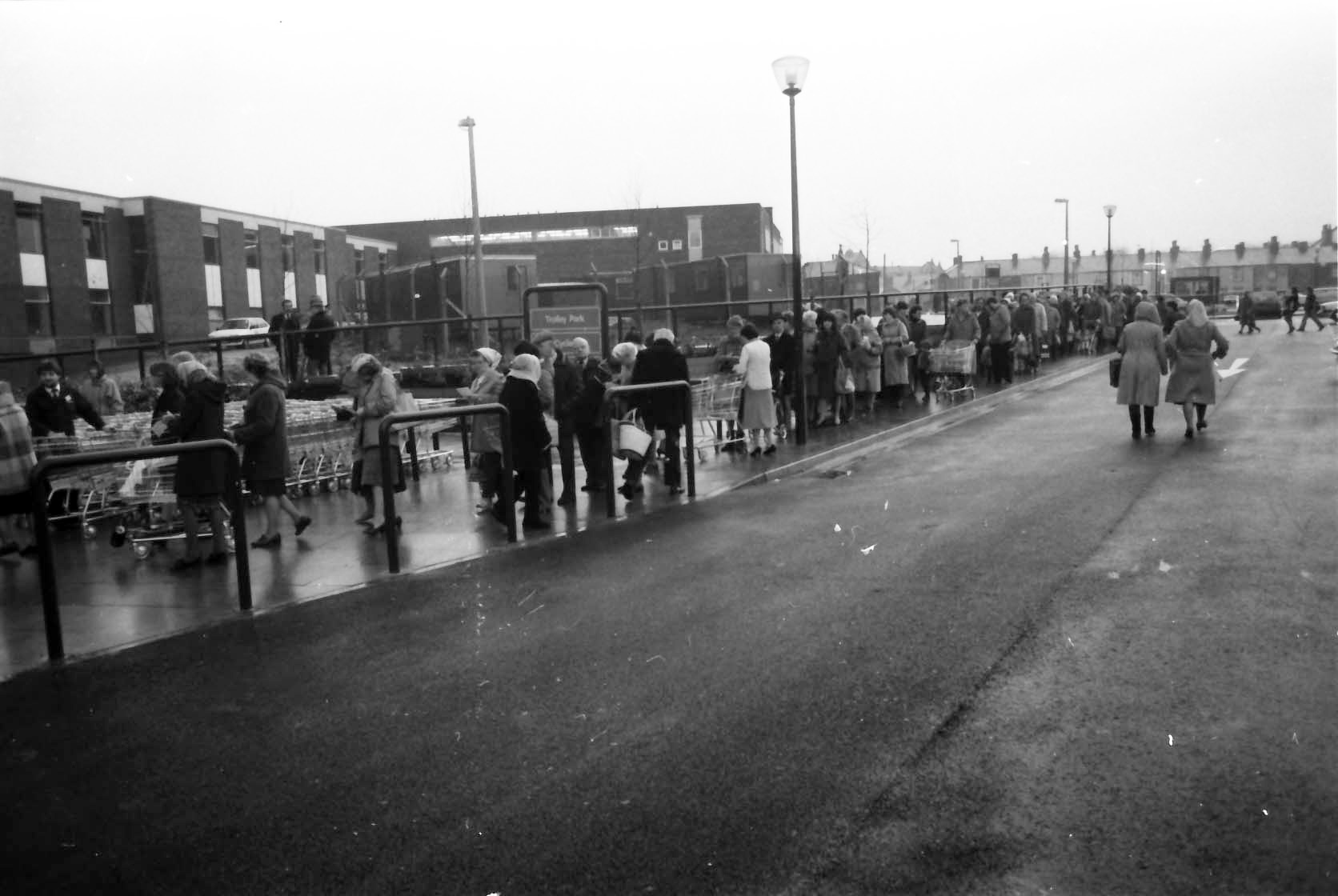Burnley Odeon Cinema 1937 - 1984
Built in 1937 in the Art Deco style, the Architect was Robert Bullivant (1910-2001) of the Harry Weedon practice. He was also responsible for the design of four other Odeon cinemas at Chester, York, Exeter and Rhyl.

The film showing in the photograph above is 12 O'clock High shown in 1949.
Located on the corner of Gunsmith Lane (Church Street) and Yorkshire Street.
It was built and operated by the Oscar Deutsch chain of Odeon Theatres Ltd.

The Odeon site long before the cinema was built - year unknown
Origin of "Odeon" The original Odeon were the popular amphitheatres of ancient Greece. The name Odeon had been appropriated by cinemas in France and Italy in the 1920s, but Deutsch made it his own in the UK. His publicity team claimed Odeon stood for "Oscar Deutsch Entertains Our Nation".

Clearing the old site in 1935

The auditorium ran parallel to Church Street and contained seating for 1,404 in the stalls and 732 in the circle. There was a small stage and two dressing rooms, but these were rarely used. With an eye towards the future the cinema also boasted a large free car park for the convenience of its patrons.
The cinema was opened by Borough member Mr Wilfred Burke on 28 August 1937 to a fanfare sounded by members of the First Battalion of the Royal Scots Guards

The Big Trees was shown in March /April 1950 staring Kirk Douglas.
The Odeon had an uneventful life, and from 1st October 1961, top Rank Bingo was played on Sunday afternoons, but this never took off. Various other schemes had been tried throughout the decade to keep the building alive. These included the adoption of Saturday morning kids' cinema, culture films - ballet, opera and Shakespeare, brass band concerts and even cut-price Sunday films and a family Christmas Carol sing-along.
The last film to be shown there was on Saturday 17 November 1973, it was another 'culture' film.
Sweden's Language of Love 'in colour'. It was billed as "The most explicitly sex educational film. Explains frankly and fully the techniques of love".
The supporting film was - Do you believe in Swedish Sin?

The Odeon just prior to closing in 1973
An announcement in the Burnley Express dated 3 April 1973 that Burnley's Odeon Cinema, no longer an economic proposition in the days of dwindling cinema audiences, is to be demolished - if planning permission is granted, to make way for a seven-storey office block.
The Express report quotes the Rank's spokesman as saying that the company had no plans to retain cinema facilities in the town. People are not going to the cinema as they used to. He continued that the tendency today is towards smaller studio-type cinemas - for which Burnley is already provided in its central area redevelopment. Larger cinemas such as the Odeon are not economically viable."
Why did it close?
- In later years it was rarely, if ever, full to capacity (2136 Seats).
- Many homes had a TV in 1973.
- New, multi-cinemas were being built, like Studio 1.2.3 shown below.

This picture published in the Express the week after the closure had the byline:
The merry Mrs. Mops, enjoying a farewell party in the cinema's staff room with Odeon manager Mrs Joan Couch (in the middle wearing spectacles).

The Burnley Odeon was closed, and demolition started in November 1973.


The seven-story office block, mentioned earlier, was not built and the site stood dormant until 1983 when a Sainsbury's supermarket was built on the site at a cost in excess of £5 million.

Early 1983 building the new supermarket begins

Work on the building is well underway. In the top right hand corner the view is of Yorkshire Street and the canal culvert.

Sainsbury's Burnley Express notice dated 17 November 1984

Tuesday 20 November 1984 - The Queue
Opening Day - Sir John Sainsbury, Peter Pike MP, the Mayor and Lady Mayoress.

The Mural

In 1990 Sainsbury's were approached by Burnley Borough Council and asked if they could do anything to brighten up the wall.
A public survey commenced and views of Sainsbury's staff, customers, local organisations and two local schools, Todmorden Road Junior school and St Peter's Primary School.
Many people remarked that the wind was often strong along that side of the building and consequently, the 28 m long mural which is very aptly named "the Winds of Change" depicts silhouettes of human figures being buffeted by the wind - representing Burnley's town folk.


The Mayor Mrs Irene Cooney unveiled Sainsbury's Plaque commemorating the commissioning of mural.
The Consequences
It was reported in the Burnley Express of Friday June 8 1984 that Safeway would close its town centre store on 28 July of that year. i.e. in 50 days' time. The article suggested that the decision came out of the blue and that the 50 strong staff would lose their jobs.
Safeway had opened the store twenty years earlier in June 1964 and at that time the Burnley Express headed their article "Real one-stop food shopping at last". With longer hours and a full money back guarantee.
However, the new Sainsbury Superstore due to open just across the street was way ahead of the Safeway operation. The new store would employ 217 full-time, part-time and evening staff. It had 23 check-outs and 360 parking spaces.
The Site in April 2019

In 2005, Sainsbury closed the store and relocated to the Prestige site off Colne Road. The Odeon site then metamorphized as a Staples Superstore.
Now Staples has gone, and the site is the home of a (now closed) Pound Stretcher store and a T K Maxx.




